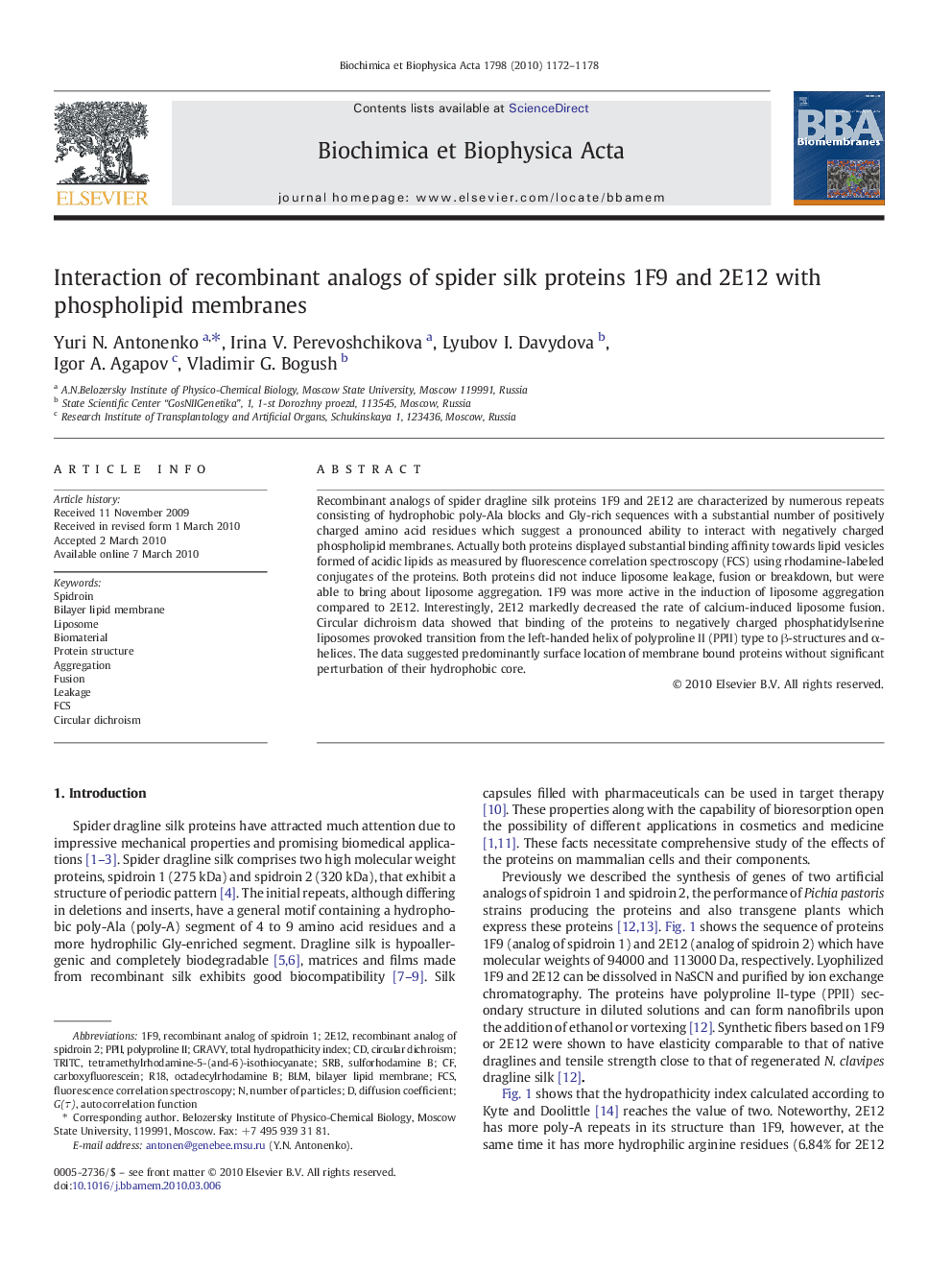| Article ID | Journal | Published Year | Pages | File Type |
|---|---|---|---|---|
| 1944857 | Biochimica et Biophysica Acta (BBA) - Biomembranes | 2010 | 7 Pages |
Recombinant analogs of spider dragline silk proteins 1F9 and 2E12 are characterized by numerous repeats consisting of hydrophobic poly-Ala blocks and Gly-rich sequences with a substantial number of positively charged amino acid residues which suggest a pronounced ability to interact with negatively charged phospholipid membranes. Actually both proteins displayed substantial binding affinity towards lipid vesicles formed of acidic lipids as measured by fluorescence correlation spectroscopy (FCS) using rhodamine-labeled conjugates of the proteins. Both proteins did not induce liposome leakage, fusion or breakdown, but were able to bring about liposome aggregation. 1F9 was more active in the induction of liposome aggregation compared to 2E12. Interestingly, 2E12 markedly decreased the rate of calcium-induced liposome fusion. Circular dichroism data showed that binding of the proteins to negatively charged phosphatidylserine liposomes provoked transition from the left-handed helix of polyproline II (PPII) type to β-structures and α-helices. The data suggested predominantly surface location of membrane bound proteins without significant perturbation of their hydrophobic core.
